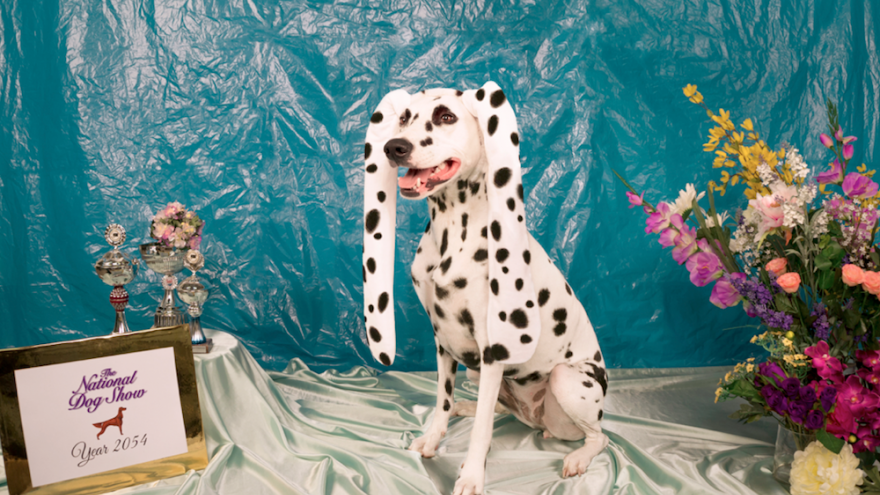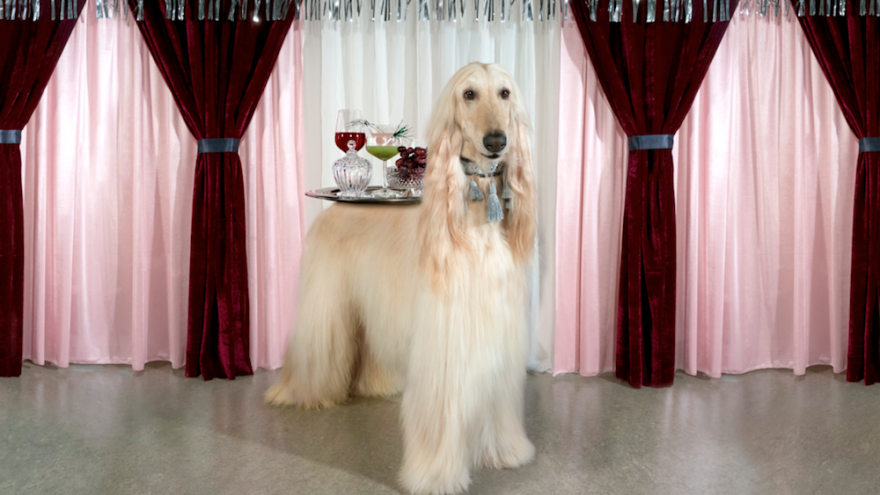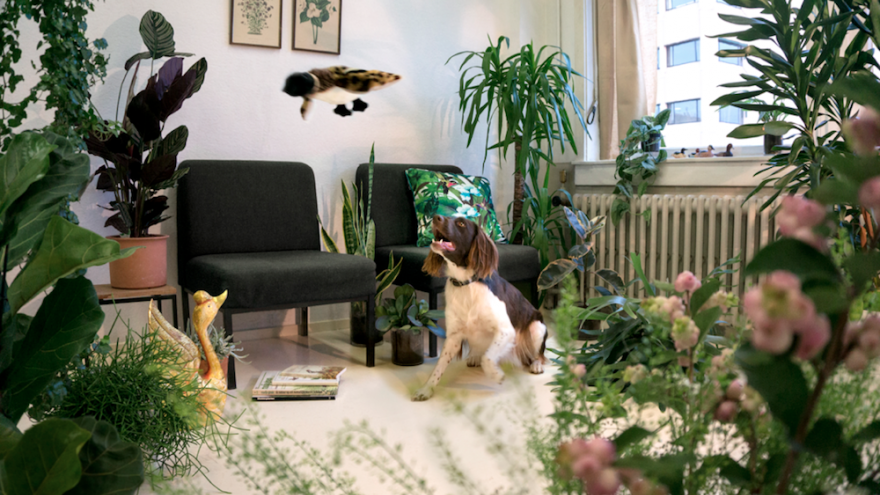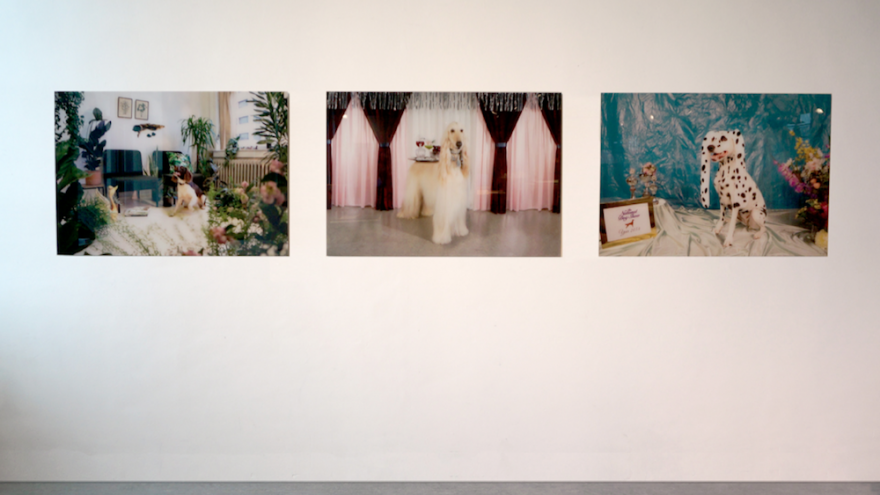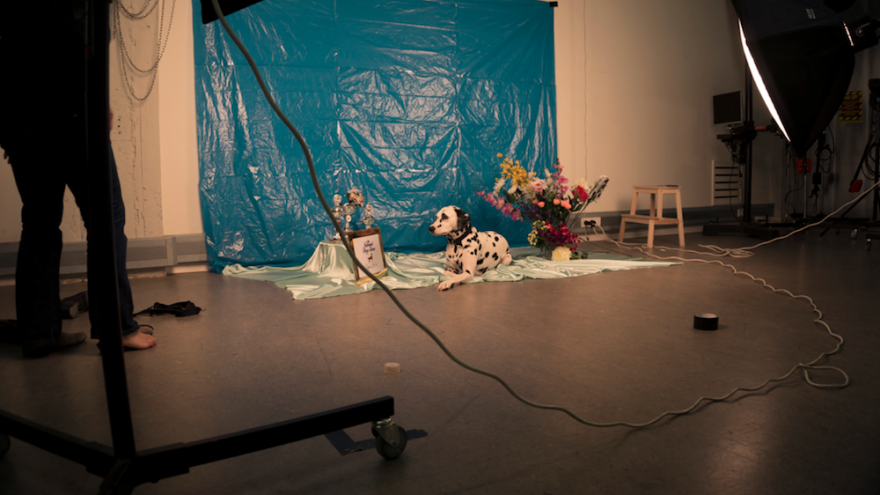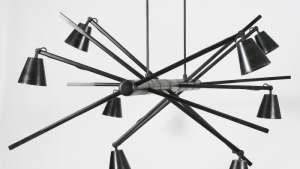From the Series
We’re the only animals that keep other animals purely for companionship. Thinking about this everyday practice led Michelle Bours to question how “normal” or natural the behaviour is. Her 2014 graduation project at Design Academy Eindhoven, "Overwhelming Love", examines interactions between humans and our canine companions out of context, showing the objective strangeness and duality of pet ownership.
For Bours, what started as a fascination with the human-dog dynamic soon turned into a strong source of inspiration. During this period she tracked down and read many interesting articles and books about our relationship with animals. She said of her research: “It was an eye opener to me, I never looked at the situation this way and I knew that this was the subject I wanted to share with the world.”
Taking dogs as her example, Bours examines two different sides of pet owners' behaviour: the contradiction lies in the fact that we believe there’s a mutual understanding and affection between our dogs and us, but we also try to control their actions, demanding obedience and even manipulating their appearance through breeding. She wants to give audiences a new perspective on the situation and make them question how contrived our behaviour actually is.
The resulting photographs are visually fun and positive with a darker, more sinister undertone. The project plays up this contrast, as it mirrors pet owners good intentions and ambivalence. For instance, the Dalmatian photograph examines selective breeding. We’ve created an unnatural variety of breeds purely for our own entertainment and that are also prone to serious health issues. Bours wonders how this will evolve in the future and will we go too far?
Will there be outlandish-looking dogs walking around? Are they going to survive or maybe turn back into wolves again?
Other images investigate the pets’ environment, and power dynamics between owners and their dogs. We’ve taken away their natural habitat and placed them into our living rooms, will they ever be able to survive in the wild or is our home their new natural environment forever? We also teach them to do strange tricks for our entertainment. If they mean so much to us, Bours asks, why don't we give them more freedom and stop teaching them those silly tricks?
Bours grew up in Hoogvliet, a small town close to Rotterdam. At a young age, she recalls, she already knew that she wanted to do something creative, without even knowing what the possibilities were. “My parents were very free and were always supporting my creativity and creative studies,” she says. “I think I got my creativity from my father, I remember he was always working on stuff in our barn, not as a profession but as a hobby.”
While working at interior studio Depot Rotterdam as a sales assistant, Bours got to see all the incoming designs. She recalls, “I think that was the moment where I saw that design is not always serious and superficial. Most of the objects had really interesting concepts and stories, which was something new to me and inspired me to start my studies at the Design Academy.”
Initially, she wanted to be a product designer. However, when drawing vases and chairs, the high level of technical ability displayed by her classmates intimidated her. This led to her selecting the department of Man & Communication, which was more focussed on the content, rather than just a form or product.
Much of Bours work is based around a humorous change of perspective that renders the ordinary facts of life into strange phenomena. This is the case in "Overwhelming Love", but it's also present in some of the designer’s previous work, such as "Catchpa Pen", which turns a security test designed to prevent digital fraud into an analogue device, or "Paradise Bird" that brightly adorns a drab seagull.
Her work aims to subvert a predetermined train of thought, causing light-hearted self-reflection. Bours wants to put smiles on people’s faces.
I like to create surprises in unlikely subjects and give my audience a fresh new view on our crazy world.
She says her inspiration comes from “funny-looking people, crying children, dogs in awkward situations, people in awkward situations, pink and purple skies, fashion developments”. Bours also enjoys “ugly kitschy objects” and flea-market finds. Her favourite part of being a designer is that you’re part of a special breed, but unlike dogs “you’re free to do what you like, you have a special power”.
When she displayed her project at Dutch Design Week, responses were positive and enthusiastic. She described how “people first start smiling when seeing the images, then start reading and then look at the pictures again with a more serious look. It was nice to hear that people can relate to the subject and start the discussion and conversation. That was what I wanted to accomplish. I’m not coming with a solution, if there is one, I just want people to look at the situation once again from another perspective.”
During her studies she assisted several directors and art directors as a way to see how film production works. “I see myself working in this business, because film is one of my favourite media,” she says. “Now that I’ve graduated, I can do whatever I want. I have a list lying around somewhere with all kinds of ideas that I had before and during graduation. I’m looking forward to take a look at those ideas again and start on a project without having any boundaries or restrictions.”

